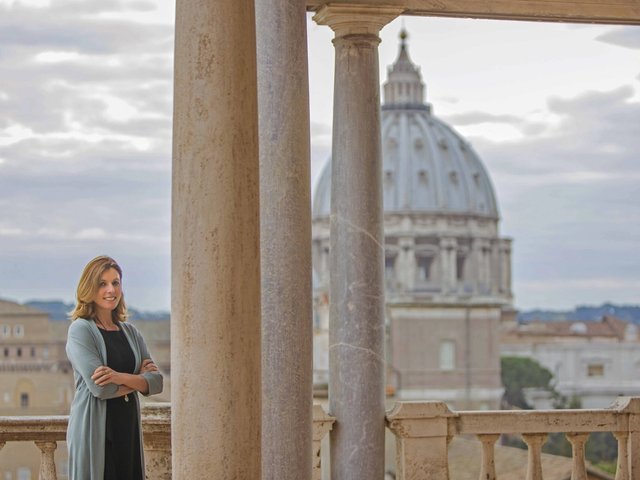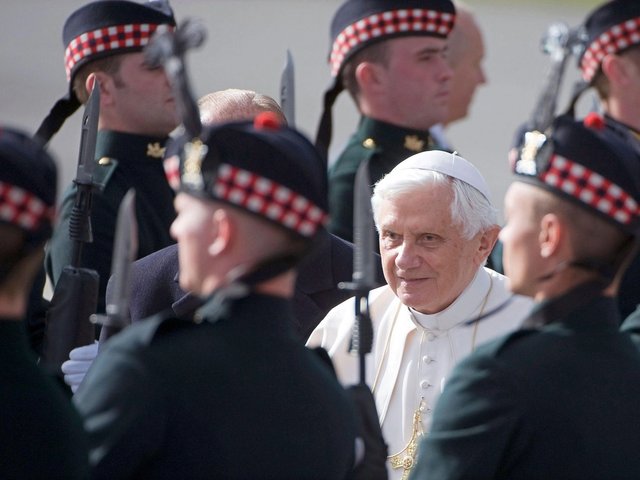The Vatican was built above a Roman cemetery and the Circus of Caligula where St Peter was executed. Since December 2013, visitors have been able to see the whole of this necropolis, with its hundreds of tombs dating from the first century BC to the first century AD, including the tomb of St Peter.
In November 2013, Pope Francis celebrated mass with a box on the altar containing bones that may or may not be of St Peter. Both archaeological finds and relics, these exemplify the dual nature, sacred and profane, of the extraordinary group of collections and buildings created by successive popes and presided over by Antonio Paolucci, the director of the Vatican Museums.
After a successful career as the superintendent of the Florentine museums and as the Italian minister of culture from 1995 to 1996, he was called out of retirement in 2007 by Benedict XVI, and his mandate has just been extended for another three years by Francis. Paolucci is an inspiring lecturer and art historian, but he is also admired for his pragmatism and general savoir faire. A security guard spoke warmly to me of how he has modernised the administration of this vast and inconvenient museum, with commonsense measures such as advance sales of tickets, which have reduced queuing to tolerable lengths. But Paolucci must also work closely with his ecclesiastical superior, Cardinal Ravasi, a noted intellectual who mounted some of the best exhibitions seen in Milan when prefect of the Ambrosian Library, and who is determined that the Church and contemporary creativity can come together and feed each other.
The Art Newspaper: What do you say to people who think the Church should sell all its treasures and give to the poor?
Antonio Paolucci: If it sold all its masterpieces, the poor would be poorer. Everything here is for the people of the world.
Has the election of Pope Francis I made a difference?
Because of him, even more people come to Rome. After the Angelus prayer in the morning and the papal audiences, they want to see the museums. We have 5.1 million visitors a year and I would like to have zero growth now.
What is the role of the Vatican Museums?
People expect them to be very pious; instead, you see more male and female nudes than in most museums. They have managed to embrace the culture of mankind with great ease; the Church took classical antiquity and said: “This is mine because revelation has sanctified Antiquity, and I will put it in my house”. The truest metaphor for God is the artist and here you find artistic creation of every kind, from Michelangelo in the Sistine Chapel to the Raphaels to the Japanese art, the Etruscan, the Egyptian…
Do you have any other collections to look after?
We are like a superintendency for the Vatican, protecting and conserving its heritage. It is just 110 acres, half garden, and half monuments by some of the greatest architects who ever lived—Michelangelo, Bramante, Bernini and Borromini—and thousands of works of art. Certain places outside the Vatican also come under our care, including the great basilicas of Rome, the shrine of Loreto, the church of Sant’Antonio in Padua. In addition, we are an archaeological service.
What about presents given over the centuries to the popes?
We should do an exhibition. There are cupboards full, some of them quite extraordinary, such as the throne given to Paul VI by a Central African ruler, made up of Kalashnikovs. The symbolism is that, by sitting on it, the pope brings peace to the world.
How do you and Cardinal Ravasi, the president of the Pontifical Council for Culture, divide up responsibility for culture in the Vatican?
We are two departments of a single Vatican cultural policy. For example, we did the Vatican pavilion at last year’s Venice Biennale together; Ravasi wanted it to happen and the Vatican Museums physically carried it out. That is the kind of relationship we have, quite apart from our deep friendship.
Do you exchange ideas?
His main aim is to rebuild the relationship between the art of today and the Church which was broken more than 200 years ago with the beginnings of modernity. It’s a very brave project and he is well aware of the difficulties; he says that the pavilion at the Biennale was a small green shoot, a sign of the Church’s intentions.
What is the difference between being a museum director here and in Italy?
A fundamental difference is that there are no unions here. This is an autocratic and paternalistic regime. People get co-opted and if you are no good, you get asked to leave. Who says that the open competition system is necessarily better? The Vatican Museums come under the Governatorate, currently led by Cardinal Bertello, the dicastery [governmental department] that administers the daily life of the Vatican, its offices and so on.
Do you have donors?
The US donors have just paid for the €4m conservation of Michelangelo’s Cappella Paolina and now they are giving €2m to restore the Gallery of Maps and another €2m to restore the Scala Santa. Every year we get €5m to €6m, mainly from the US, but also [from] the UK, Belgium and other countries.
Do you make loans?
Many. Our criteria for agreeing a loan include the scholarly merit of the exhibition, but also the priorities of the Church. For his recent visit to Brazil, Pope Francis wanted an exhibition on the Face of Christ, and when Benedict XVI went to Dresden we sent Raphael’s Madonna of Foligno [1511-12] so that it could be shown with the famous Sistine Madonna.
What is your biggest practical problem?
The impact of so many visitors. We have greatly reduced the queues with online booking, but the sheer numbers can be damaging, especially in the Sistine Chapel, which everyone wants to see. At the height of the season it gets 20,000 to 25,000 people a day, all breathing out carbon dioxide and vapour and bringing in dust. We are employing Carrier, a top US firm, to work out a method of dealing with the humidity; otherwise, we will have to limit numbers, which I don’t want to do—you might have come all the way from Korea to see the Michelangelos.
What gives you most pleasure about this job?
After the crowds have gone, standing in the Octagonal Courtyard lit by the rays of the setting sun, with the great sculptures, the Laocoön, the Venus Pudica, around me. Or being in the Stanza di Eliodoro, with the fresco of the Liberation of St Peter—it’s already Titian, it’s Caravaggio before Caravaggio. Raphael really was the greatest painter of all time. To think that they pay me for this!






